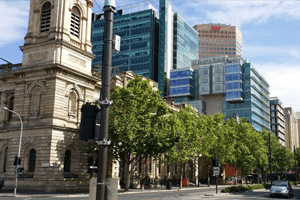Please fill out the details below to receive information on Blue Wealth Events
"*" indicates required fields

Although Sydney and Melbourne are geographically the closest cities to Adelaide, their property market performance remains far apart. With historically low interest rates driving the former to experience strong year-on-year growth, these rates have failed to stimulate the Adelaide economy. In the past Adelaide has struggled with an above national average unemployment rate and a lack of infrastructure spending.
The property market has remained steady, with median house prices relatively flat for the past few years. The subdued growth is largely driven by unemployment and a lack of local confidence in the property market. Unemployment rates are now the second highest in the country, only trailing Western Australia, which is feeling the repercussions of a downturn in one of Australia’s largest resources booms. The closure of the Holden General Motor’s factory in late 2017 resulted in a loss of 2,500 jobs and had a significant impact on the city from a sentimental perspective.
The lack of employment opportunities is also restricting population growth. South Australia is reliant on international migration figures to ensure population growth remains positive but in 2015-16 interstate migration figures tracked a net loss of 6,400 residents, a figure that has been growing since a loss of 3,400 people in 2006-07. Overall, the city grew by 9,000 overseas migrants. With interstate figures dwindling and further restrictions on overseas migration being introduced it is likely that population growth will continue to be subdued.
ABS median house price data indicates that in the twenty-four months to September 2017 the median house price in Adelaide increased by 3.2%. Affordability is the key driver for the Adelaide property market, however, a lack of demand stemming from limited employment opportunities and weak population growth is likely to restrict potential property market growth.
The rental market is far more positive, with a 1% vacancy rate across the city. SQM Research also indicates that as at January 2018 the average rental yield for apartments was just above 5% and for houses 3.8%. This in in stark contrast to the other aspects of the market as Adelaide outperforms the capital city averages in terms of the rental market.
Outlook for 2018
The Adelaide market offers a positive story from a cash flow perspective; however, the lack of long-term growth fundamentals is likely to see growth remain relatively subdued. Affordability and improved market sentiment may drive moderate growth; however, our research model assesses the various macro-economic drivers, which are absent in Adelaide.
